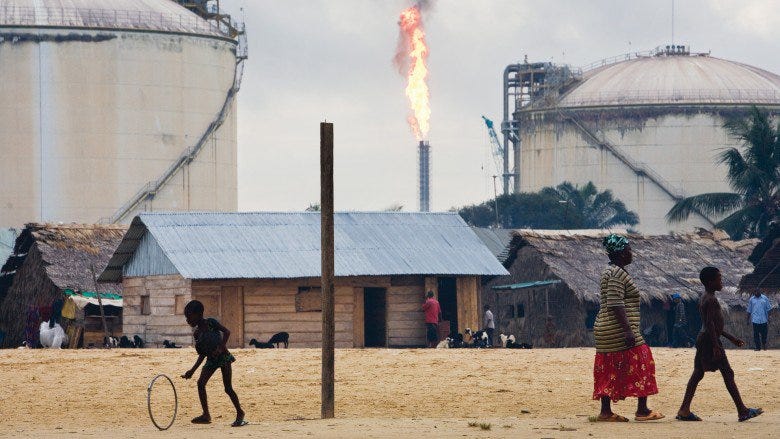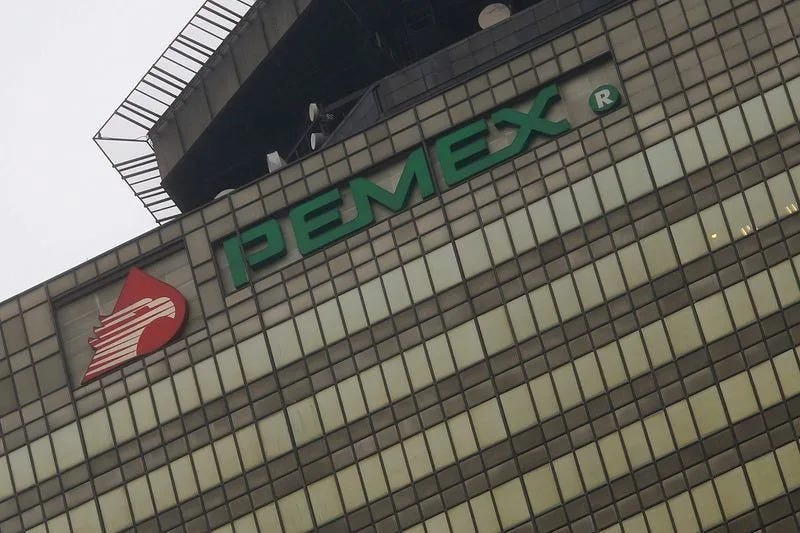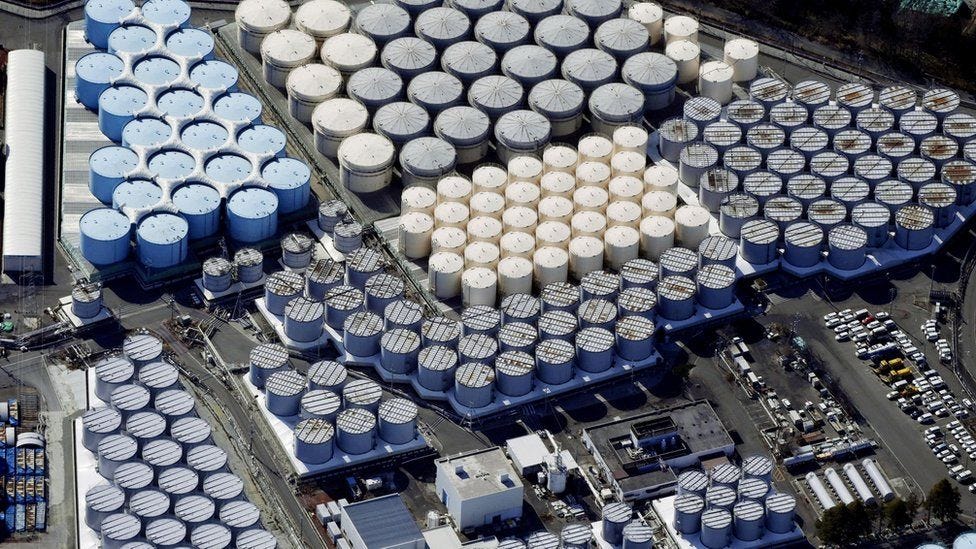Daily Energy Report: A Complimentary Copy
Natural gas flaring, OPEC+ production stable, solar and the Texas grid, UN affirms Japan release of contaminated water, China to expand ice breaker fleet, Iraq/Iran cooperate to avoid US sanctions
Dear Readers,
Shortly we will send the Weekly Oil Data Report to our EOA Weekly Newsletter subscribers. Tomorrow morning we will post a long report on the energy transition and why we are bullish on oil and gas.
Below is a complimentary copy of our Daily Energy Report.
Link:
Chart of the Day: The world loses trillions of dollars every year because of gas flaring
Summary
Figure (1) above shows show the 12 largest countries in gas flaring with the Russian Federation burning an estimated 26 billion cubic meters, followed by Iran then Iraq. Strangely enough, the top four are either under sanctions or were under sanctions (Iraq).
In 2022, the world flared an estimated 148.8 billion cubic meters, of which 77% were in the 12 countries mentioned in Figure (1). About one-quarter of the remaining 23% is in African countries not mentioned in Figure (1) above
EOA’s Main Takeaway
Natural gas flaring is a serious problem that the industry needs to solve. Not much is expected in several countries like Russia, Iran, and Venezuela, but countries like the US, Iraq, and Mexico must reduce flaring. Iraq in particular needs to utilize its associated gas to solve most of its energy problems. It is ironic that Iraq flares 17.8 bcm while it imports natural gas from Iran.
While there are many issues facing participants in COP28 in the UAE, a couple of issues are easily addressed and agreed on, but at the same time are used as diversions from other issues: natural gas flaring and methane leaks.
In short, the industry has no excuse to deal with both problems.
Source: Ed Kashi/World Bank
Story of the Day:
IRAQ OIL REPORT: Basra refinery expansion delayed by contract dispute
Summary
A financial dispute with the contractor, TechnoExport, delayed the $125 million Shuaiba Refinery again. The project was scheduled to be finished in 2018!
EOA’s Main Takeaway
Baghdad did not prioritize its downstream sector over the past years, opting instead to focus on upstream projects. For this reason, the country has continued to import costly oil products like gasoline and gasoil due to the configuration of its own refineries. Iraq is expected to remain an importer of gasoline and gasoil up to 2030.
The Shuaiba refinery expansion in Basrah was supposed to be completed in the past years but this obviously did not happen, and now it is facing further delays due to a "financial dispute" with the Czech contractor, Technoexport, according to the Iraq Oil Report. The report explains that the refinery has three 70,000 b/d units and the fourth one is supposed to increase refining capacity up to 280,000 b/d and help ease some oil product shortages.
The delay in expansion does not have an impact on the market.
The 140,000 b/d Karbala refinery, meanwhile, which came online earlier this year, is reportedly experiencing an outage.
News of the Day
1- REUTERS: Mexican Government Halts Pemex Fines
Pemex headquarters in Mexico City. Source: Reuters.
Summary
Mexico's oil regulator has scrapped plans to impose at least three fines on national energy company Pemex for violations at key new oil fields, according to previously unreleased documents and insider sources. This comes after government-backed leadership changes in the regulatory body, which now allows Pemex to operate with less restriction to help meet the president's ambitious production targets. The decision to drop fines followed several unannounced field visits that found several violations. Since the leadership change, the regulator's senior officials have advised against fining Pemex. Critics are worried about the consequences for environmental, social, and corporate governance issues as Pemex, under pressure to increase production, may disregard rules.
EOA’s Main Takeaway
It is exactly this type of intervention that is contributing to the explosions and fires that plagued the Mexican oil industry. Corruption comes in different forms, including legal ones.
2- CBS NES: Has solar power helped out the Texas power grid this summer?
Summary
North Texans are naturally concerned about the power grid's stability during the recurring heat waves. Solar energy met 15.5% of the demand on ERCOT's grid at its peak. Energy economist Ed Hirs stated that each incremental power source, including solar, helps, especially during peak demand. Over the years, solar power generation in Texas has seen substantial growth, rising from accounting for 2% of ERCOT's energy in 2020 to 6% in 2022.
EOA’s Main Takeaway
Yes, the contribution of solar increased in recent years. While it helped during peak hours, we view this story as a diversion because the contribution of wind energy almost vanished. Texas has the largest installed wind capacity in the nation. When temperatures are above 100 degrees (F), it is that hot because wind is NOT blowing. The wind also tends not to blow during very cold temperatures when solar is also producing little to no power. The key problem with wind/solar has not been solved. When wind/solar are needed most, they often produce very little power leaving people vulnerable to outages during extreme temperatures.
3- CHINA DAILY: Swimming in Fukushima nuclear-contaminated water is absurd
5- BBC: Fukushima nuclear disaster: UN watchdog approves plan for water release
Japan is running out of space to store wastewater from Fukushima. Source: Reuters
Summary
The UN's International Atomic Energy Agency (IAEA) has affirmed that Japan's plan to discharge wastewater from the tsunami-stricken Fukushima nuclear plant into the sea meets international standards and will have a negligible environmental impact. China disagrees saying it, “strongly opposes the decision. The Fukushima facility, wrecked by a tsunami in 2011. It is running out of storage space for the water used to cool nuclear reactors. Despite international opposition, notably from China and South Korea, Japan's release plan awaits final approval from regulators. The plant's wastewater, containing tritium and carbon 14, meets safety standards and is reported to be at lower levels than regular wastewater releases from nuclear power plants worldwide. However, the plan has also raised significant concerns among the Japanese public, neighboring countries, and local fishing communities.
EOA’s Main Takeaway
This is one of those controversial issues where each group is talking its books. China would oppose it anyway. Nuclear plants release water into the oceans all the time. The issue here is that the water that Japan is planning to release is the result of an accident. Hence what is in it and the level of concertation of certain materials could be higher than the water that is usually released into the oceans.
Our view is related to the future: technology has improved substantially. Our knowledge has evolved. The new reactors will not have such a problem caused by human errors. The world needs nuclear energy to evert future power shortages on one hand, and to meet some of the climate goals on the other. The controversy of releasing the contaminated water now should not deter countries from building small, more modern reactors.
6- S&P GLOBAL: OPEC+ June Crude Output Relatively Steady
OPEC Secretariat building in Vienna, Austria. Source: OPEC
Summary
OPEC+ kept crude oil output largely unchanged in June, with deeper cuts from Saudi Arabia and Russia anticipated. June saw a slight increase of 10,000 barrels per day to 41.34 mb/d, following a significant drop in May, with seven countries, including Russia, maintaining voluntary cuts until 2023's end. Saudi Arabia announced a further cut of 1 mb/d for July and August, while Russia, which had pledged a 500,000 b/d reduction, will further decrease crude oil exports by the same amount in August. Some OPEC countries increased their output, offset by a decrease from non-OPEC members.
EOA’s Main Takeaway
No surprise here as the voluntary cut started in July. The fact that production is relatively steady without any surprise increases is bullish on its own.
7- RTV: China’s Expanding Icebreaker Fleets
Summary
China has begun construction of its third icebreaker vessel, intended for exploring inaccessible polar seabeds and conducting deep-sea scientific research, set to be delivered by 2025. This move is part of China's Arctic Policy, aimed at extending its military capabilities, conducting research, and extracting resources in the Arctic. China says the new vessel will have the capacity to collect seabed samples, identify geological formations, and uncover potential mineral deposits. China plans to utilize the vessel for four months in the polar regions, with the rest of the year dedicated to research in the South China Sea. This expansion is likely to heighten geopolitical tensions due to increased competition for resources and influence, and potentially disrupt established power dynamics in the Arctic and South China Sea regions.
EOA’s Main Takeaway
While the focus is on the mineral wealth of the Arctic, we should not forget that the only icebreakers that can pave the way for Russian oil and LNG exports from the north in the winter are Russian, (that includes oil tankers that are also icebreakers), and they are all embargoed by the EU and the G7. The Chinese icebreakers might work as a replacement to maintain the flow of Russian crude and LNG to China and other countries
8- FINANCIAL TRIBUNE: CNG-Hybrid Vehicles to Bridge Gasoline Supply-Demand Gap in Iran
Summary
The Financial; Tribune reported that “In an effort to narrow down the growing gap between gasoline supply and demand, the National Iranian Oil Refining and Distribution Company and Iran’s major auto manufacturers Iran Khodro Company (IKCO) and SAIPA are pooling minds to raise the production of gas-powered cars, the head of the R&D Department in the National Iranian Oil Refining and Distribution Company said.”
EOA’s Main Takeaway:
After the destruction of the Abadan refinery, which was for years the largest refinery in the world, during the Iraq-Iran war, most of Iran’s gasoline consumption was imported. Gasoline was Iran’s weakest link. When US sanctions on Iran failed to force Iran to comply regarding its nuclear program, the late Senator John McCain proposed imposing sanctions on gasoline exports to Iran from any country. The US Congress passed a bill in 2009 that imposes sanctions on foreign companies that help supply gasoline to Iran.
Long before the bill was passed, the Iranian government embarked on a program to reduce or even eliminate dependence on gasoline imports, and it succeeded in its efforts. It rationed the use of gasoline, forced a switch from gasoline to CNG, and built several small refineries. Producing gasoline from light crude and naphtha is an easy process.
Later, with an abundance of natural gas supplies and the continuation of sanctions, dependence on CNG increased. As population and car ownership increased, the need to reduce gasoline consumption increased. Keep in mind, Iran can export gasoline to neighboring countries and receive world prices while the subsidized gasoline prices inside Iran make gasoline prices one of the lowest in the world.
The problem is that Iran is suffering from shortages of gas right now as demand for electricity is at an all-time high and fear of blackouts forced the government to cut natural gas exports to Iraq.
9- Bloomberg: Iran/Iraq Swap Oil/Gas Skirting US Sanctions
Summary
Iraq has agreed to an oil-for-gas swap with Iran, providing a solution to its power grid issues while circumventing US sanctions on Iran. The deal, announced by Iraqi Prime Minister Mohammed Shia Al-Sudani, resolves a longstanding payment problem for gas imports due to US sanctions on Iran. The recent reduction in power generation in Iraq resulted from a 50% cut in gas shipments from Iran over unpaid dues. Despite being OPEC's second-largest oil producer, Iraq relies on energy imports due to its underdeveloped gas industry, a situation the US has been urging Iraq to address.
EOA’s Main Takeaway
This is one way to work around US sanctions on Iran. Iraq cannot transfer money to Iran for purchasing Iranian gas, gasoline, or electricity. This is why Iranians have been sending private planes to Baghdad to load them with cash.
Sanctions do not apply to barter deals.
10- REUTERS: Vietnam Ramping Up Coal Emissions
Summary
Vietnam's thermal power emissions are set to rise significantly as the country's imports of thermal coal reach their highest in three years due to a prolonged heatwave. Imports of thermal coal in May and June were more than 3 million tonnes, double the monthly average of 1.5 million tonnes in 2022 This increase suggests a rise in coal-fired electricity generation to meet the power demand for air conditioning, which in turn is expected to lead to higher power sector emissions.
EOA’s Main Takeaway
Coal remains King. It remains the largest source of electricity in the world, despite spending more than $4 trillion dollars globally since 2010 on renewables. Countries experiencing high economic growth need coal for a simple reason: any spending on renewables will barely meet the growing demand. Part of that growth in demand cannot be intermittent, hence the increase in coal use.
11- Energy Voice: Asian Industry Calls for Renewables, Big Challenges Ahead
Summary
A recent report by BayWa r.e. indicates a rising trend toward renewable energy in Asia, with most companies expecting renewable energy use to reach 41 to 60 percent in the next six to ten years. Three-quarters of the countries have teams assigned to source and procure renewable energy. Malaysia stands out as a success story, making significant strides in renewable energy, mainly solar, through initiatives such as the large-scale solar (LSS) program. However, future projects are expected to depend more on the private sector, with the government shifting away from state-backed initiatives. While enthusiasm for renewables is growing in the region, challenges such as infrastructure and grid issues remain, requiring both investment and corporate commitment to overcome.
EOA’s Main Takeaway
We will believe it when we see it. We are publishing a long report tomorrow that shows how difficult it is to achieve these targets.
12- Reuters: Oil Rises as US Inflation Cools
Summary
Brent oil futures surpassed $80 a barrel for the first time since May following data suggesting the US interest rate hikes may be close to achieving the goal of slowing economic growth. US consumer prices rose modestly in June, marking the smallest annual increase in over two years. At the same time, a weaker dollar and optimism surrounding Chinese stimulus, and US stockpile data have fueled positive sentiment in the oil market. Forecasts from the EIA and IEA indicate a tightening market through 2024. This is primarily due to strong demand from China and developing countries coupled with supply cuts from major producers. Saudi Arabia pledged to extend a production cut of 1 million barrels per day in August, while Russia will cut exports by 500,000 barrels per day.
EOA’s Main Takeaway
As we predicted in our EOA 2023 Oil market Outlook that we published in early January, the second half of the year is bullish, especially the fourth quarter. While the market is getting tight, we believe oil prices will rise above current levels, but will be capped by China’s SPR releases, hence eliminating the possibility of $100 oil this year (unless a major political crisis emerges)
13- EIA: Crude and distillate inventories Increased by 10.7 mb
Summary
The Energy Information Administration (EIA) reported today a crude build of 5.9 mb to 458.1 mb (see Figure 2 below). It also reported a withdrawal from the SPR by 0.4 mb to 346.8 mb. That brings the total of recent releases to about 25 mb. All the recent releases were sweet crude.
Gasoline inventories were virtually flat at 219.1 mb. Distillate inventories, meanwhile, increased by 4.8 mb to about 118.2 mb.
Crude oil imports decreased last week by about 1.158 mb/d to 5.880 mb. Crude oil exports decreased by 1.757 mb/d to 2.144 mb/d, the lowest since the beginning of the year.
Refinery utilization increased from 91.1% to 93.7 as crude inputs to refineries increased
EOA’s Main Takeaway
The SPR releases are coming to a close. Only 0.4 mb was withdrawn last week. An additional 1.0 mb is still due to be released.Despite a lot of noise in the weekly data, the large declines in demand, imports, and exports cannot be ignored, especially gasoline and distillates. However, we expect to see more crude draws. The large decline in exports contributed to this week’s large build.We pointed out last week that the vanishing “adjustment” does not mean the EIA fixed the problem. Large swings are a concern too. Today is a case in point: the adjustment was large: 9.9 mb.Other News
REUTERS: Pakistan negotiating second cargo of discounted Russian crude
REUTERS: Iran says foreign ministry will follow up on Durra field, Tasnim reports
OFFSHORE ENGINEER: Germany Tells UN: Nord Stream Inquiry Found Subsea Explosive Traces on Yacht











